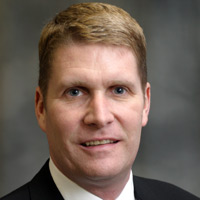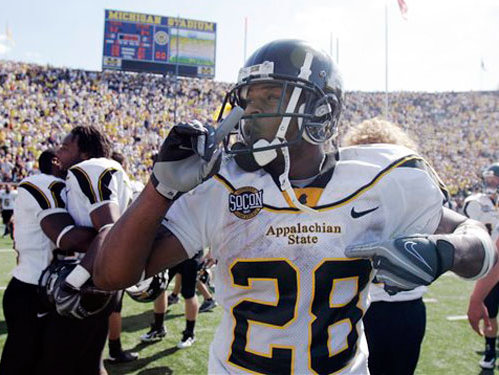The Wisconsin Intercollegiate Athletic Conference has an anniversary on tap that deserves some monumental fanfare.
The 2012-13 athletic season will mark 100 years of competition in the ninth-oldest conference in the NCAA. Considering the seismographic shifting of schools and conferences at the top levels today, longevity alone is worth a party.
"It's been on the radar screen for some time," said WIAC Commissioner Gary Karner. "When some of our athletic director's would retire in the last couple of years I would often comment or joke with them saying that we hoped they would stick around until the centennial.
"About three years ago we started talking about it, and it picked up steam the last two years. We really looked at this as a three-year celebration, if you will."
Back in 1913, it was known as the State Normal School Conference, thankfully morphing into more sophisticated monikers over the years like the Wisconsin State University Conference (WSUC) and later, the WIAC.
Superior, River Falls, Stevens Point, La Crosse, Oshkosh, Whitewater and Platteville were all there at the baptism, with Stout joining the group a year later, and Eau Claire hooking up in 1917. Milwaukee was on board from the get-go until clearing out in 1964, but the core remains intact and thriving at the Division III level.
"About 80 percent of our student athletes are from the state of Wisconsin," said Karner, a UW-Stevens Point graduate. "One of the secrets to our success is the kids that we get from the state of Wisconsin. It's a great feeder program for us. They're good athletes, good citizens and students, and that goes a long way toward our success."
Karner and the conference can back up the chest-thumping. The WIAC has national championship banners sprinkled throughout the annals of its near century of athletic completion, not to mention athletes who have used the in-state platform to springboard and compete on some of the biggest stages in all of sports.
There have been Olympians like track and field star Andrew Rock (UW-La Crosse), men's gymnast Casey Edwards (UW-Oshkosh) and Melissa Mueller (UW-Oshkosh) from women's track and field. And the professional ranks have been littered over the years with former WIAC greats like Tom Newberry (UW-La Crosse) in football, Terry Porter (UW-Stevens Point) in basketball and Wisconsin-born-and-raised baseball players Jim Gantner (UW-Oshkosh), Jerry Augustine (UW-La Crosse), Bob Wickman (UW-Whitewater), Jarrod Washburn (UW-Oshkosh) and current Washington Nationals starting pitcher Jordan Zimmermann (UW-Stevens Point).
The approaching centennial seemed like the perfect vehicle to corral all this talent and give the conference some past and present props. The daunting task was created to form All-Time teams comprised of elite performers from the last 10 decades and recognize those individuals who laid the foundation.
"(It's) extremely difficult," acknowledged Karner. "Anytime you select an all-time anything, I don't care if it's a restaurant or movie or whatever, it's going to generate controversy because there are many people that are deserving that you can possibly include. This was no exception; we could have added dozens and dozens more student athletes and coaches to the teams without question, but we had to draw the line somewhere."
Karner didn't sequester himself in a room armed with media guides and record books to determine the best of the bunch in each sport. He enlisted the help of some of the greatest historians the WIAC knows.
"We engaged our sports information directors," said Karner. "They're the ones who have the most data anyway and, quite frankly, our SIDs are some of the most objective people we have on our campuses. This is their business, looking at numbers and statistics and compiling information. To me at least, it seemed like a natural to have this group engaged in the process."
But even this meeting of the minds didn't shake out obvious choices for everyone to agree upon and help sort out this prestigious group of athletes from a 100-year span. The early years provided morsels of data at best, and with sports evolving over decades and generations, even detailed stats would never stack up side-by-side with the numbers posted in the modern era.
"We tried to look at it from a standpoint of trying to compare contemporaries as opposed to comparing people between eras," said Karner. "The success of this conference, which is a good thing, made it even more difficult."
Case in point: when the brain trust of this project crunched the initial numbers and awards, the bar was set incredibly high just to get on the board for consideration. Some of the WIAC's premiere participants have been track and field athletes, where the starting qualification began with five-time national champions in the sport.
"We started out with hundreds of people, and we would start by saying 'OK, who was a two-time or three-time first team all-American?' and put them on the list,'" recalled Karner. "Then maybe we would say, 'Who was a four-time first team all-conference player?' So we tried to come up with some sort of objective criteria for each sport as a starting point."
There are 24 sports represented for both men and women All-Time teams, including badminton, which was classified as a "championship" sport during a five-year chunk of the century.
The earliest player to adorn any list is UW-River Falls basketball standout Roger Kuss, who hooped it up with the Falcons from 1951-1953. There are also a handful of athletes who made the cut still on campus and still competing at a high level during the current academic and athletic school year.
Coaches on the All-Time teams got the nod based on votes by a 20-member panel made up of two members from each of the nine WIAC markets. And for those athletes and coaches who paved the way but just didn't produce eye-popping stats back in the day, Karner and the WIAC created a "Legacy Team" which will be unveiled and announced at a later date.
"We recognize that there would be people from the '20s, '30s and '40s that the game just doesn't translate to what the game is today," said Karner. "And pre-1970 we have almost no record books or stats; there weren't even a lot of all-American teams at this level back then.
"A lot of those things didn't exist, so what we are going to try to do with the Legacy Team is pick up those individuals who played into the '60s that should be recognized but played in an era where the game was different or there just were not a lot of statistics that were being kept."
Leaving no stone unturned, the 100th anniversary also includes the birth of the WIAC Hall of Fame and 30 difference-maker members inducted into the inaugural class. These honorees will have company every three years, and will recognize individuals from every arena responsible for the growth of the conference, not just participating and coaching.
"I say it to the WIAA all the time that we're really lucky as a conference," said Karner, now in his 16th year with the WIAC on his watch. "We have some really unique characteristics being state schools all within the state. It also helps us that there's only one Division II school in the state (UW-Parkside) and only one Division I football program (Wisconsin).
"We have some things going for us that a lot of other conferences would not have; as a result, we get some darn good athletes."
And those non-scholarship athletes are producers. There have been 94 NCAA National Champions in the history of the conference, more than half of those crowned during Karner's tenure. And while recent success creates a buzz and draws a crowd, Karner is most impressed with the reception he receives during his statewide speaking engagements to flood the public with the WIAC back-story.
"It not only triggers memories but it also opens up quite a lot of eyes," said Karner. "As much publicity as we get, which compared to most Division III conferences is off the chart, but it never ceases to amaze me when I go out and speak to groups how many people come up to me and say, 'I had no idea ... this is just an unbelievable story.'
"I told chancellors this is the perfect vehicle to tell our story. Once people hear it, most agree, it's one of the greatest sports stories in the history of Wisconsin."
Bob currently does play-by-play at Time Warner Cable Sports 32, calling Wisconsin Timber Rattlers games in Appleton as well as the area high school football and basketball scene. During an earlier association with FS Wisconsin, his list of teams and duties have included the Packers, Bucks, Brewers and the WIAA State Championships.
During his life before cable, Bob spent seven seasons as a reporter and producer of "Preps Plus: The Milwaukee Journal Sentinel High School Sports Show."
And the joke is, Bob has a golf shirt from all four Milwaukee television stations. Sad, but true: Bob has had sports and news anchor/reporter/producer stints at WTMJ, WISN, WDJT and WITI.
His first duty out of college (UW-Oshkosh) was radio and TV work in Eau Claire. Bob spent nearly a decade at WEAU-TV as a sports director and reporter.
You may have heard Bob's pipes around town as well. He has done play-by-play for the Milwaukee Mustangs, Milwaukee Iron, and UW-Milwaukee men's and women's basketball. Bob was the public address announcer for five seasons for both the Marquette men and women's basketball squads. This season, you can catch the starting lineups of the UW-Milwaukee Panther men's games with Bob behind the mic.
A Brookfield Central graduate, Bob's love and passion for sports began at an early age, when paper football leagues, and Wiffle Ball All Star Games were all the rage in the neighborhood.




